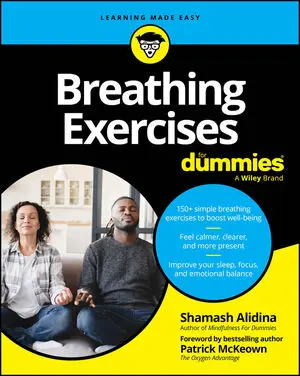Think of your breath like a loyal companion — always by your side, ready to energize or calm you. All it needs is a little attention. In this cheat sheet, you’ll discover how targeted breathing techniques can help you relieve stress, improve sleep, boost everyday wellness, manage panic, enhance physical performance, and anchor mindful moments. Each technique is backed by science and designed for real-life situations, so you can confidently choose the right approach for your needs. By the end of this article, you’ll have a practical toolkit for immediate calm, better energy, and lasting resilience—plus answers to common questions and expert tips for avoiding mistakes. Start your journey to better breathing and unlock the benefits for your mind and body today.
Just breathe: The breathing exercise starter checklist
New to breathing exercises? Practice for just 1 to 2 minutes at first. Think of it like sipping tea, not chugging a latte.
1. Sit upright or lie down comfortably. No yoga pretzels needed. Try imagining a string pulling your head toward the sky — posture matters.
2. Breathe in and out through your nose. Your nose is nature’s air filter. Mouth breathing is like inviting dust bunnies to a lung party.
3. Let your belly rise on the in breath and fall on the out breath. Pretend you’re inflating a tiny beach ball under your rib cage. Try placing one hand on your chest and one hand on your belly. Encourage the chest to be still and the belly to expand and contract.
4. Finish by noticing how you feel. That’s mindful breathing. Even a tiny shift counts. Awareness is the first step to mastery.
Breathing techniques for specific needs
Top 5 breathing exercises to know by heart
Make the following exercises part of your toolkit, so you can draw on them whenever you need support:
- Coherent breathing: Inhale and exhale for five to six seconds each. Think of coherent breathing as the Swiss Army knife of breathwork — it trains calm and heart-brain coherence.
- Light, slow, deep (LSD) breathing. Practice barely-there breathing for calm clarity. This technique is perfect for decision fatigue. Imagine breathing secretly so no one else can hear you.
- Mini breath holds: Breathe in through your nose, breathe out through your nose, then hold for about three to five seconds. Repeat 5 times. This technique builds carbon dioxide tolerance, which is a good thing.
- Pursed-lips breathing: Breathe in through the nose and breathe out slowly through pursed lips (as if you’re blowing through a straw). This technique relieves shortness of breath. It also works for calming road rage.
- Humming: Hum on the exhale. This technique calms the vagus nerve (the main nerve of your relaxation response), helping to calm your body by connecting your brain to your heart, lungs, and digestive system. Humming also releases lots of healthy nitric oxide. Bonus: Kids love pretending to be bees!
Common breathing exercies mistakes to avoid
When you’re practicing breathing techniques, avoid the following:
- Over-breathing: Are you taking giant gulps of air? If so, you may feel lightheaded. Less is more.
- Mouth breathing all the time: Your nose is a built-in filter, humidifier, and peace maker. Mouth breathing is for singing karaoke, not daily life.
- Forcing or straining: Breathing isn’t a CrossFit workout. Gentle is effective.
- Practicing too long, too soon: Three calm breaths is better than 30 frantic ones. Remember: Progress, not perfection.
- Ignoring posture: Slumping squashes your lungs. Sit or stand tall — imagine balancing a book on your head!
- Chest breathing: Belly breaths beat chest breaths hands down. Let your diaphragm do the work (no six-pack required).
One-minute breathing reset
The anytime, anywhere “xen in 60 seconds” technique is perfect for Zoom calls, school pickups, or surviving in-laws:
- Inhale through your nose slowly. Think: “I am. . . .”
- Exhale through nose or pursed lips even more slowly. Think: “. . . at peace.”
- Repeat six times (about a minute). Optional: Combine with a soft hum and/or a tiny smile. Voilà! Instant calm!
For the little ones: Breathing exercises for kids
Here are some playful breaths that work well for kids ages 4 and up:
- Balloon belly: Breathe in, puff your tummy! Breathe out, deflate! This technique works wonders to calm down after play.
- Humming bee breath: Inhale, then exhale and hum like a bumblebee. Bonus: How long can you buzz today?
- Smell the flower, blow the candle: Take a deep breath in through your nose like you’re smelling a flower, and then slowly blow out through your mouth as if you’re blowing out a candle. Bonus: Use your fingers as pretend candles!
- Animal breaths:
- Lion breath: Take a deep belly breath in, and then roar on the exhale. This technique is great for frustration and releasing energy.
- Bunny breath: Pretend you’re a bunny sniffing carrots. Take three quick sniffs through your nose, and then exhale slowly through your mouth. Repeat this playful breath pattern five to ten times to create a calming rhythm. This technique is an energy booster.
- Snake breath: Inhale deeply through your nose, and then slowly exhale while making a long ssssss sound — just like a hissing snake. This technique is an excellent tool for enhancing focus.






